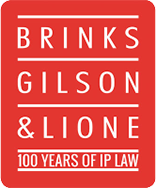The United States Court of Appeals for the Federal Circuit recently issued its decision in Automotive Body Parts Association (ABPA) v. Ford Global Technologies, LLC (2018-1613), affirming a district court’s summary judgment that ABPA was not entitled to a declaratory judgment of invalidity or unenforceability to Ford’s design patents. In making its decision, the court considered ABPA’s challenge to Ford’s design patents under various theories of functionality, patent exhaustion, and repair rights.
ABPA is an association of companies that distribute automotive body parts. This association and a number of its members have been at odds with – and in litigation with – Ford and other auto manufacturers for many years with respect to design-protected replacement parts. This case addressed design patents covering hoods and headlamps for Ford’s F-150 trucks. Under U.S. patent law (35 USC § 171), design patents cover the ornamental designs for an article of manufacture, and that may include an entire assembled article as well as its particular components. This prohibits design patent coverage over elements whose appearance is dictated by their function, although the courts have recognized that a valid design for a useful article of manufacture will contain some functional elements.
ABPA framed its invalidity arguments in the context of replacement parts for the hoods and headlamps covered by Ford’s design patents. ABPA specifically argued that consumers prefer replacement hoods and headlamps that aesthetically match their trucks’ original appearance. Therefore, Ford’s design patents covering these hoods and headlamps are functional for aesthetically matching the original trucks, similar to the trademark doctrine of aesthetic functionality. The court, however, rejected this attempt to import trademark aesthetic functionality into design patent law. Rather, the court held that–even considering a consumer’s preference for a particular design to match other parts of a whole–the aesthetic appeal of a design to consumers is inadequate to render that design invalid as functional under the patent law. In reaching its decision, the court took into account inventor/designer testimony regarding the ornamental nature of the designs and considered the availability of multiple different aftermarket products with different designs for meeting a customer’s specific aesthetic tastes (e.g., replacement parts that accomplish the same function as the original headlight and/or hood, but with a different ornamental appearance, many of which are actively sought by consumers), thus further undermining ABPA’s position on the functionality of Ford’s design patents.
In its opinion, the court further rejected ABPA’s proposal to apply the principle of aesthetic functionality from trademark law to the design patent setting. Although the court acknowledged certain similarities between trademarks and design patents, it held the considerations that drive the aesthetic functionality doctrine of trademark law simply do not apply to design patents. The source identification value for promoting competition that undergirds trademark law is markedly different from the time-limited protection afforded to design patentees.
The court also rejected ABPA’s policy arguments asking the court to only enforce Ford’s design patents in the initial market for sale of the F-150 truck, and not in the market for replacement parts. The court found no support for ABPA’s policy arguments. Indeed, it expressly noted one of several previous bills attempting to introduce just such a policy that was submitted to Congress, but was not adopted, reiterating the court’s properly restrained role of not applying laws that have not been written.
ABPA also argued that Ford exhausted all of its design patent rights upon initial sale of the F‑150 truck, including all components. In addressing alleged unenforceability of Ford’s design patents, the court rejected ABPA’s arguments on patent exhaustion and repair. ABPA specifically requested that the court extend its rules on patent exhaustion to cover design patented components, and the court refused. The parts ABPA member companies were selling were not authorized by Ford; therefore, the court accordingly found patent exhaustion did not apply to ABPA’s situation, because patent rights can only be exhausted by the patentee or its authorized seller. The court similarly found ABPA’s arguments on the right of repair unpersuasive. Although the ‘right to use’ that is transferred to a purchaser under an authorized sale includes the right to repair the patented article, it does not permit complete reconstruction of the patented device or component. In ABPA’s situation, the court found that a purchaser of Ford’s F-150 truck was not licensed a right to repair those trucks using replacement parts that embody the hoods and headlamps covered by Ford’s design patents but provided by someone not authorized by Ford as the patent owner.
So, what practical takeaways emerge from this case? (Standard caveat: None of these constitutes legal advice. Consult with an experienced IP attorney before pursuing particular strategies or actions).
- Robust design patent protection includes patenting an entire product design, as well as replacement parts that have an ornamental appearance.
- It may be useful to document inventors’ design efforts as they relate to functional dictates for components. This way, appropriate decisions for protection under design versus utility patents can be made.
- Design patent protection differs from trademark protection by offering broader design protection, with a trade-off of a specifically limited lifespan for that patented exclusivity. This can affect consideration of strategies for building intellectual property protection.





 />i
/>i

